Light microscopy
Light microscopy refers to the use of any kind of microscope that use visible light to observe specimens
The light microscope, so called because it employs visible light to detect small objects, is probably the most well-known and well-used research tool in biology.
Types of light microscopy
–Bright-field
–Dark-field
–Fluorescence
–Phase contrast
Microscope parts and care
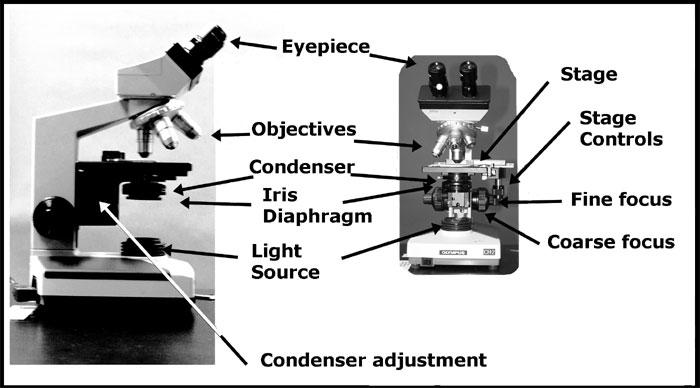
Always carry with 2 hands, one on the arm and one on the base
Only use lens paper for cleaning the lens
Keep liquids away!
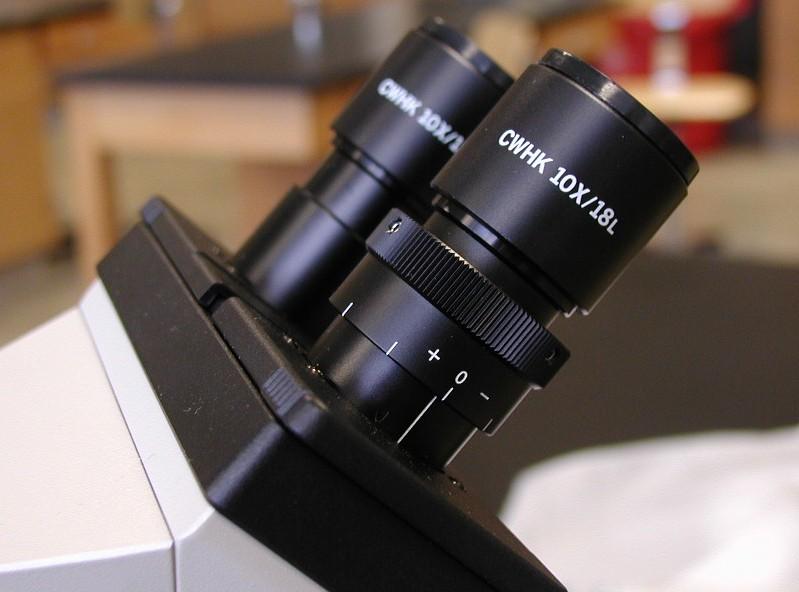
Ocular lens (eyepiece)
Remagnifies the image formed by the objective lens
Body tube
Transmits the image from the objective lens to the ocular lens
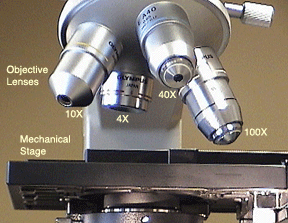
Objective lenses
Lens that is closest to the slide and provide initial magnification on a specimen (Primary lenses that magnify the specimen)
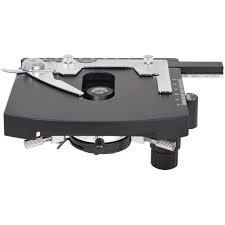
Mechanical Stage
Holds the microscope slide in position
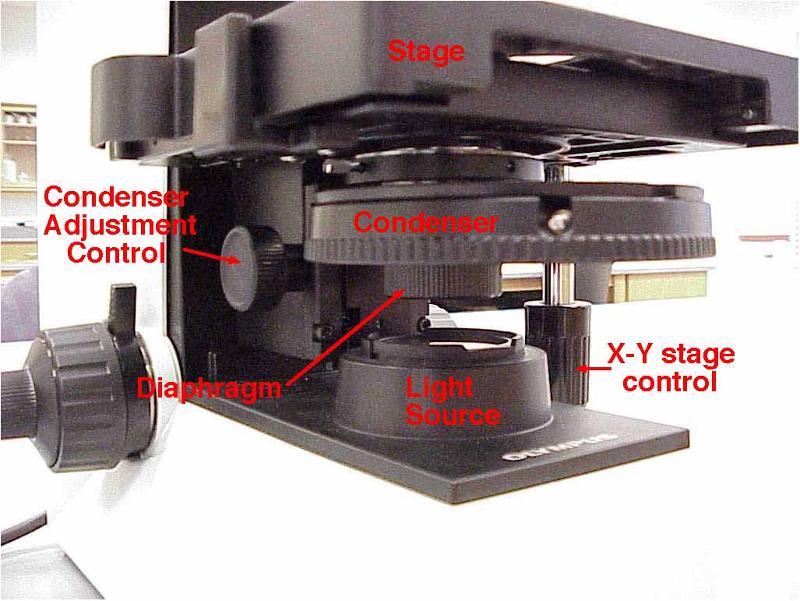
Condenser
Focuses light through specimen
Iris Diaphragm
Controls the amount of light entering the condenser and the light that reach specimen
Illuminator
Light source
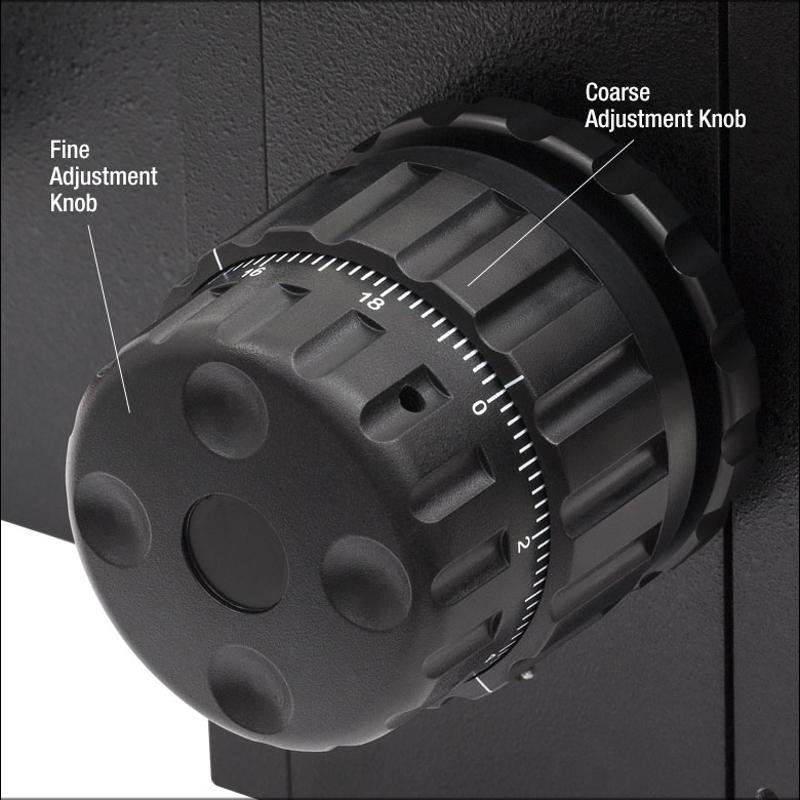
Fine focusing knob
Used after initial focusing, to sharpen the image
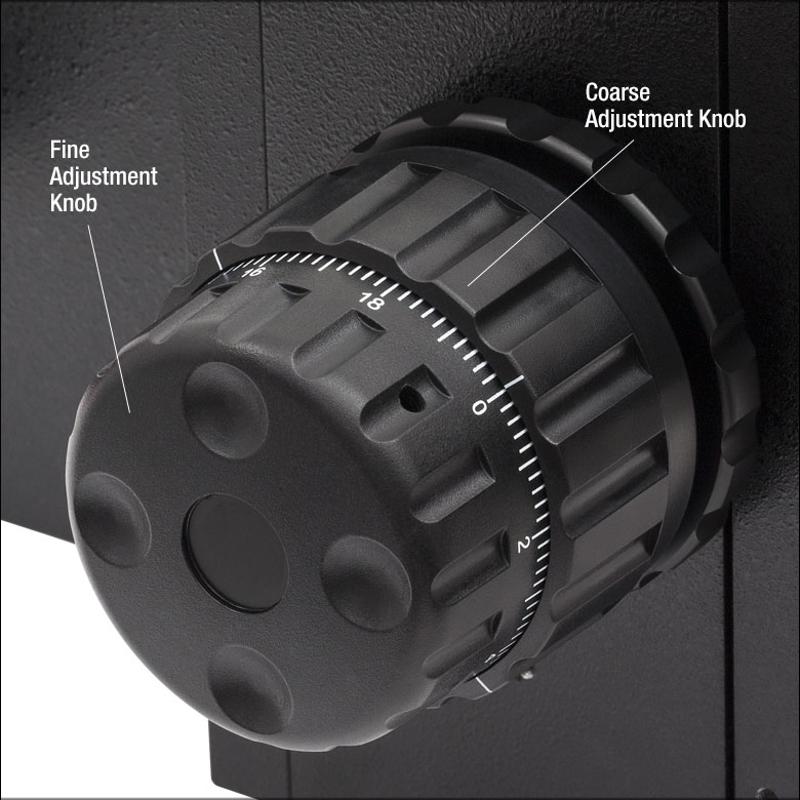
Coarse focusing knob
Used or initial focusing, should never be used when the high power or oil immersion lens
Total Magnification
Magnification by the objective lens X (multiply) Magnification by the Ocular lens
Objective Scanning
4 X
locate specimen
Objective Low Power
10 X
view the whole or large portions of specimen
Objective High Power
40 X
see small, detailed parts of specimen
Objective Oil Immersion
100 X
see very small specimens (e.g., bacteria)
is used to keep light from bending
Bright-field Microscopy
- It is is the simplest of all the optical microscopy illumination techniques.
- It produces an image that it is transmitted through a specimen. The specimen restricts light transmission and appears “shadowy” against a bright background.
- Sample illumination is transmitted (i.e., illuminated from below and observed from above) white light and contrast in the sample is caused by absorbance of some of the transmitted light in dense areas of the sample.
- Most of the biological specimens are colorless or transparent, therefore staining of the sample is used in order to improved the contrast between the specimen and the background.
HOW do the image is formed?
- The light comes from the bottom in this case
- It passes through the condenser lens (it concentrates the light (making illumination of the specimen more uniform)
- The light is refracted (bend) as it passes through the objective lens producing a magnifying real image
- The image is magnified again at it passes through the ocular lens to produce a virtual image that appears below or within the microscope.
Resolution
Magnification is due to the RESOLUTION of light as it passes through the lens
the clarity of an image
Bright-field Microscopy
Resolution and Refractive Index
- Resolution is the ability of the lenses to distinguish two points
- A microscope with a resolving power
of 0.4 nm
can distinguish between two points ≥ 0.4 nm - Shorter wavelengths of light provide greater resolution
- The refractive index is a measure of the
light-bending ability of a medium - The light may bend in air
so much that it misses
the small high-magnification lens - Immersion oil is used to keep light from bending
Bright-field Microscopy
Oil immersion
- Light bends when it passes from glass to air or from air to glass because air and glass have different refractive indices. The bending of light as it passes through the glass slide to the air and then to the glass lens decreases the resolving power. At high magnification (100X) it can prevent a clear image from being viewed. This decrease in resolution can be prevented by putting immersion oilbetween the slide and the lens because immersion has the same refractive index as glass
Light of shorter wavelength produce a clearer image than light of longer wavelength
True
Best limit o esolution
The best limit of reso;ution (resolving power) for a light microscope is 0.2 Nm ( 200nm)
What position should the stage be when you store the microscope?
at the lowest position
If the resolving power of your microscopy is 250 nm, will you be able to distinguish two point that are 260 nm apart ? why?
Yes because the have a distance apart and it would possible to see it